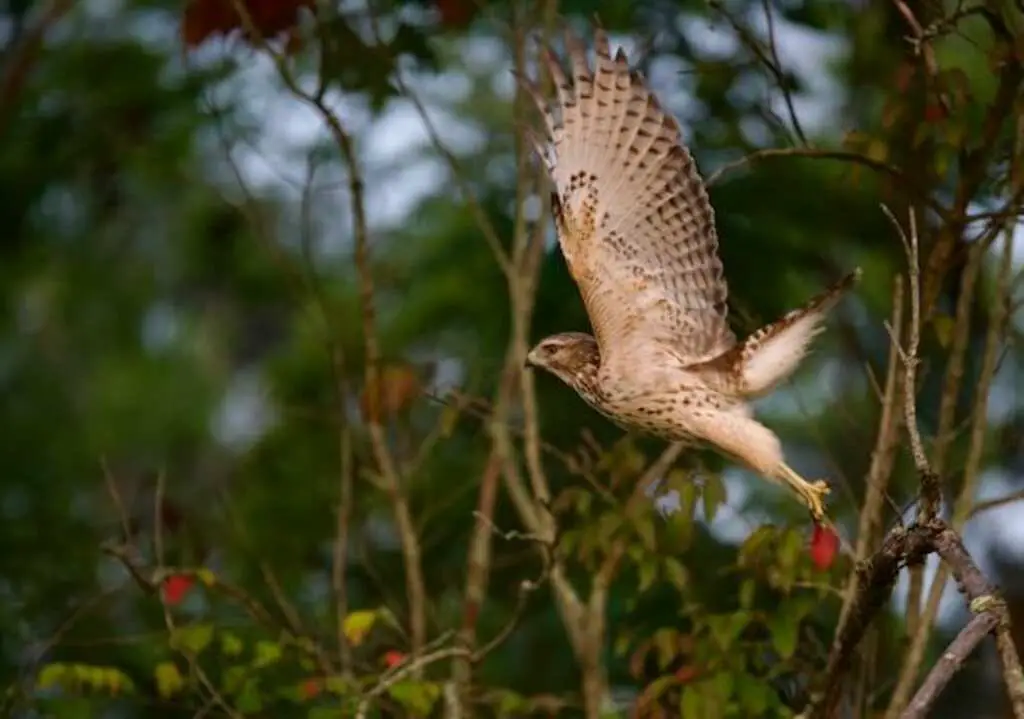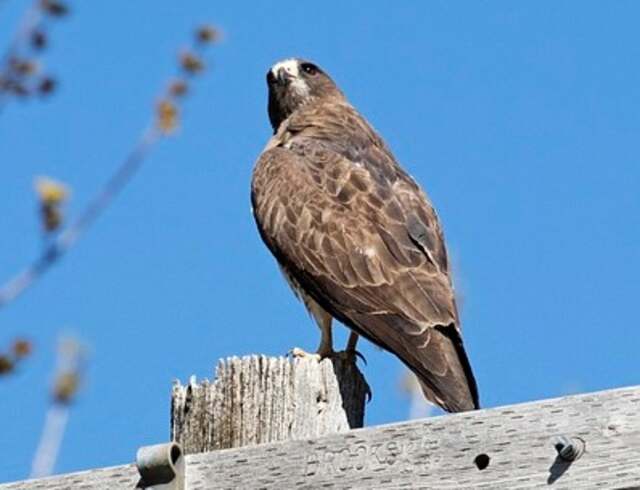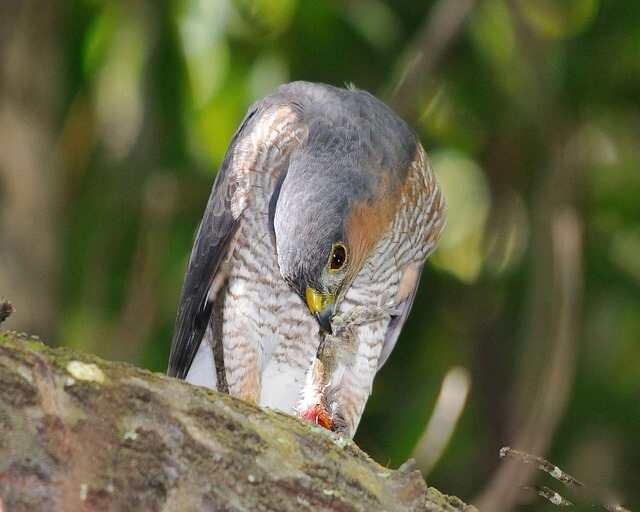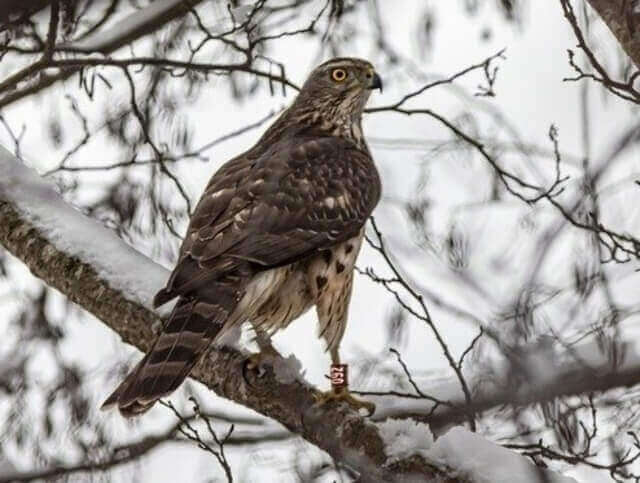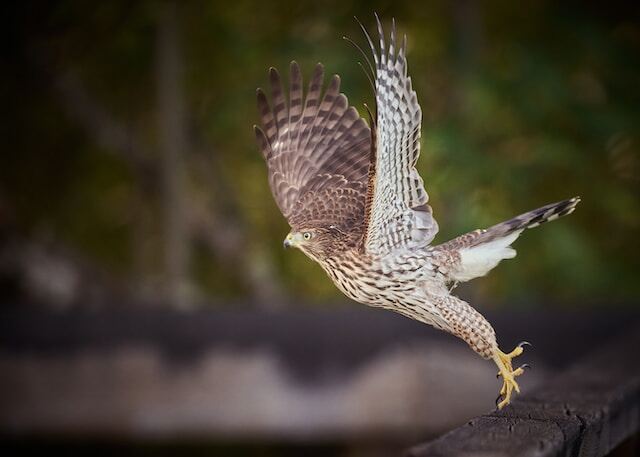Curious about the captivating world of hawk courtship? Discover “How Do Hawks Mate?” These magnificent birds showcase more than just hunting prowess – their intricate mating behaviors ensure the survival of their species.
Explore the nuances of hawk courtship, from rituals and strategies to the challenges they face. Delve into the importance of conservation in preserving these majestic creatures and their vital role in our ecosystem.
Embark on a journey to understand the secrets of hawk mating, gaining a deeper appreciation for these remarkable birds of prey. Get ready to soar into their remarkable world!
Table of Contents
Key Takeaways
- Hawks have complex courtship and mating behaviors that ensure only the fittest and genetically diverse individuals reproduce.
- Hawks exhibit various courtship rituals during mating season, including aerial displays and food offerings.
- Monogamy benefits hawks by providing stable partnerships for raising offspring and defending territories.
- Hawks typically build their nests in elevated locations that provide a clear view of their surroundings and both parents work together to raise their chicks.
The Importance of Mating in a Hawk’s Life
The act of mating is an essential component of a hawk’s life cycle, contributing significantly to the continuation of the species.
The role of courtship and mate selection in hawks is crucial, as it ensures that only the fittest and most genetically diverse individuals reproduce, thus increasing the chances of survival for the offspring.
Courtship rituals involve intricate displays of aerial acrobatics, vocalizations, and physical interactions, such as the exchange of food or nest building.
However, human interference, such as habitat destruction and hunting, can disrupt these processes, leading to a decline in hawk populations.
Understanding the mating behaviors of hawks is crucial for their conservation and management. In the subsequent section, we will explore the different mating behaviors of hawks.
The Different Mating Behaviors of Hawks
Various courtship rituals are displayed by hawks during mating season, which have evolved to ensure successful reproduction.
These mating rituals involve elaborate courtship displays, such as aerial displays and food offerings, which are performed by both male and female hawks.
The male hawk will typically initiate the courtship displays, which involve flying in circles, diving, and displaying their unique plumage.
The female hawk will respond to these displays, and if she is interested, she will allow the male to approach her.
Once the pair has mated, they will continue to engage in courtship displays to strengthen their bond.
This behavior is essential for the successful reproduction of hawks, as it ensures that the pair is able to work together to raise their young.
The next section will focus on the monogamous nature of hawks and how it influences their mating behavior.
Monogamy in Hawks
As a result of their monogamous nature, hawks exhibit a strong bond with their partner and engage in courtship displays throughout their reproductive years.
Monogamy benefits hawks by providing stable partnerships for raising offspring and defending territories.
Hawks engage in a variety of mating rituals, including aerial displays and vocalizations, to attract a mate and strengthen their bond.
Courtship displays can involve circling flights, mutual preening, and food-sharing between partners.
These behaviors are important for establishing trust and cooperation between mates, which is essential for successful breeding.
The monogamous nature of hawks also means that they typically mate for life, with pairs returning to the same nesting site year after year.
This consistency allows for more efficient breeding and the potential for stronger offspring.
As hawks move into mating season, their courtship displays become more frequent and intense, leading up to the actual mating process.
Mating Season
During the mating season, courtship displays of hawks become more frequent and intense, with males performing aerial displays and presenting food to females as a sign of trust and cooperation.
The timing of the mating season varies depending on the species and the environmental factors affecting mating success, such as food availability and weather conditions.
Hawks are monogamous and mate for life, which means that the courtship and mating rituals are crucial for successful breeding and the continuation of the species.
After the courtship displays, the hawks engage in copulation, which is the next step in the breeding process.
Copulation
Copulation is a crucial step in the breeding process of hawks, as it ensures the fertilization of the eggs and the continuation of the species.
Hawks, like many other birds, have a unique reproductive cycle that involves courtship behavior, in which the male will display his prowess and strength to attract a female mate.
Once a pair has been established, they will engage in mating rituals, which include aerial displays, vocalizations, and physical contact.
During copulation, the male will mount the female from behind and insert his cloaca, or reproductive organ, into hers, allowing for the transfer of sperm.
The entire process can take only a few seconds, but it is crucial for the successful fertilization of the eggs. A table can be used to better understand the mating process of hawks.
| Behavior | Description |
|---|---|
| Courtship | Male displays prowess and strength to attract a female |
| Mating Rituals | Aerial displays, vocalizations, and physical contact |
| Copulation | Male mounts female from behind and inserts cloaca for sperm transfer |
Nesting and raising chicks is the subsequent process after copulation, where the female will lay eggs and incubate them until they hatch.
Nesting and Raising Chicks
In the life cycle of hawks, nesting and raising chicks is a critical stage. During this stage, hawks exhibit remarkable building and maintenance skills to construct nests that are sturdy enough to protect their young ones from predators and harsh weather conditions.
Once the nest is built, the female hawk incubates the eggs while the male hawk provides food and protection.
These processes are essential for the survival of the hawk species and highlight their remarkable adaptability in the wild.
Building and Maintaining Nests
Nests are crucial for hawks as they provide a safe and secure environment for them to breed and raise their offspring.
Nest construction is an important aspect of parental care for hawks, with the male and female working together to build a sturdy and safe nest.
Hawks typically build their nests in the tops of trees, on rocky cliff faces, or in other elevated locations that provide a clear view of their surroundings.
They use a variety of materials in the construction of their nests, including sticks, twigs, and other plant materials.
Once the nest is built, hawks will continue to maintain it throughout the breeding season, adding additional materials as needed to ensure that it remains stable and secure.
As hawks prepare to move on to the next stage of breeding and raising chicks, they will begin incubating their eggs and working to ensure the safety and protection of their young.
Incubating and Raising Chicks
Once the eggs are laid, the female hawk takes on the primary role of incubating them for several weeks until they hatch.
Incubation techniques vary between species, but typically, the female hawk sits on the eggs for most of the day and night, leaving only briefly to hunt or stretch her wings.
During this time, the male hawk will hunt for food and bring it back to the nest for the female to eat. Once the chicks hatch, both parents take on the responsibility of feeding and raising them.
Hawks are known for their strong parental care, and they will fiercely defend their young from predators or any other threats.
As the chicks grow, the parents will gradually decrease their feeding frequency, and the chicks will begin to branch out and explore their surroundings.
However, raising chicks is not without its challenges, as hawks must contend with factors such as habitat loss and climate change.
These challenges can affect the availability of food, nesting sites, and even the timing of breeding.
Challenges to Mating and Reproduction
Habitat loss and fragmentation, as well as climate change, pose significant challenges to the mating and reproduction of various animal species.
The reduction of natural habitats and the fragmentation of ecosystems have led to a decline in the availability of suitable breeding grounds and the loss of genetic diversity.
Meanwhile, climate change has disrupted the timing of reproductive cycles, altered the distribution of species, and led to changes in predator-prey dynamics, which can all affect the reproductive success of animals.
Habitat Loss and Fragmentation
The degradation and fragmentation of natural habitats have resulted in a drastic decline in the population of hawks, with studies showing that over 30% of all hawk species are currently at risk of extinction.
The loss of habitat is a major challenge to the mating and reproduction of hawks, with many species struggling to find suitable nesting sites and adequate food sources.
Habitat restoration and the creation of wildlife corridors are effective ways of addressing this issue, by increasing the availability of suitable habitats and facilitating the movement of hawks between different areas.
However, these efforts require significant resources and collaboration between governments, conservation organizations, and local communities.
Despite these challenges, it is imperative that we take action to protect the habitats and populations of hawks, as they play a vital role in maintaining healthy ecosystems and biodiversity.
The impact of climate change on hawk populations is another important issue that must be addressed, as changes in temperature and precipitation patterns can disrupt the breeding and migration patterns of these birds, further exacerbating the challenges they already face.
Climate Change
Climate change poses a significant threat to the survival of hawk populations, as it can impact their migratory patterns and breeding success through changes in temperature and precipitation.
Here are three ways in which warming temperatures affect hawks:
1) it alters the timing and duration of seasonal events, such as the availability of prey or the onset of breeding season, which can disrupt the synchronization of the hawks’ reproductive cycles;
2) it changes the distribution and abundance of prey species, which can affect the hawks’ food supply and lead to starvation or malnutrition; and
3) it can increase the frequency and intensity of extreme weather events, such as droughts and storms, which can damage or destroy the hawks’ nests and reduce their breeding success.
Consequently, conservation efforts are crucial to mitigate the impact of climate change on hawk populations and ensure their survival in the face of this global threat.
Conservation Efforts
Conservation efforts play a crucial role in preserving endangered species, such as hawks.
The protection of their habitat is one of the most effective ways to ensure their survival, as it provides the necessary resources for their survival and reproduction.
Captive breeding programs are also an important part of conservation efforts, as they help to increase the population size and genetic diversity of endangered species like hawks.
Protection of Habitat
Like hawks that fiercely defend their nesting territories, the preservation of habitat is crucial in maintaining the reproductive success of many species.
Habitat protection is a key component of conservation strategies, and there are many ways in which it can be achieved.
Here are four ways that habitat protection can help maintain the freedom of species like hawks:
1) Restoration of degraded habitat can provide critical breeding, foraging, and nesting sites for hawks.
2) Protection of important migratory routes and stopover sites can ensure that hawks have the resources they need during their long journeys.
3) Preservation of intact ecosystems can maintain biodiversity and ensure that hawks have access to a diverse range of prey species.
4) Collaboration with local communities to promote sustainable land use practices can reduce habitat fragmentation and ensure that hawks have the space they need to thrive.
By protecting these vital habitats, we can help ensure that hawks and other species continue to play their important roles in ecosystems.
Captive breeding programs offer another important tool for conservation, and they can help supplement populations that have been impacted by habitat loss and other threats.
Captive Breeding Programs
Captive breeding programs have become an increasingly popular tool for conserving endangered species by breeding and raising them in controlled environments.
These programs aim to increase the breeding success and genetic diversity of threatened species, allowing them to recover and potentially be reintroduced into their natural habitats.
However, captive breeding programs face several challenges, including inbreeding and loss of genetic diversity.
To overcome these challenges, many programs use techniques such as artificial insemination and genetic management plans to maintain genetic diversity.
Despite these efforts, it is important to note that captive breeding programs should not be seen as a replacement for habitat protection and restoration, as they cannot fully replicate the complex interactions and ecological functions of natural habitats.
Frequently Asked Questions
What is the average lifespan of a hawk?
The average lifespan of a hawk varies by species, with some living up to 20 years in the wild. Habitat preferences also play a role in life expectancy, with those living in urban areas having shorter lifespans.
Do hawks only mate with members of their own species?
Hawks generally mate within their own species, but interspecies mating has been observed in rare cases. Courtship behaviors such as aerial displays and vocalizations are used to attract a mate. The success of mating depends on the compatibility of the individuals involved.
How long does it take for hawk eggs to hatch?
The incubation period for hawk eggs varies depending on the species, ranging from 28 to 45 days. The hatching process is initiated by the chick inside the egg using an egg tooth to break through the shell.
What do hawks eat during mating season?
Food preferences and breeding success are linked to exploring hawk diet during mating season and its impact.
Investigating mating rituals of hawks and their environmental influences can reveal behavioral patterns and ecological factors. This scientific approach engages an audience with a subconscious desire for freedom.
Do hawks mate for life, or is it a one-time occurrence?
As for hawks, their mating habits vary between monogamy and polygamy. Some species mate for life, while others mate with multiple partners.
Courtship behaviors involve aerial displays, gift-giving, and vocalizations. Such habits reflect the evolution of species and their environmental adaptations.
Conclusion
Mating is a crucial aspect of a hawk’s life, and it involves various behaviors that are vital to their survival. The mating behaviors of hawks vary, with some species practicing monogamy, while others engage in polygyny.
The mating season is also a critical period when hawks engage in copulation, nest building, and raising chicks.
Despite the challenges they face in mating and reproduction, hawks have developed unique adaptations to ensure their survival.
One of the significant challenges facing hawks is habitat loss, which has led to a decline in their population.
However, conservation efforts are being made to protect their habitats and ensure their continued existence.
It is essential to appreciate the role of hawks in the ecosystem and take measures to preserve their populations.
Using a rhetorical device such as metaphor or analogy can make scientific writing more engaging.
For example, one could compare the mating behaviors of hawks to a carefully orchestrated dance, with each step essential to ensuring successful reproduction.
This helps readers to visualize the complex and nuanced behaviors of hawks in a more relatable way.
Overall, understanding the mating behaviors of hawks is crucial to their conservation and the preservation of our natural world.

